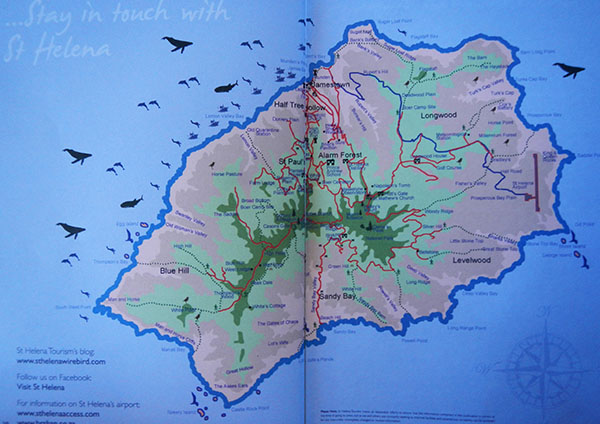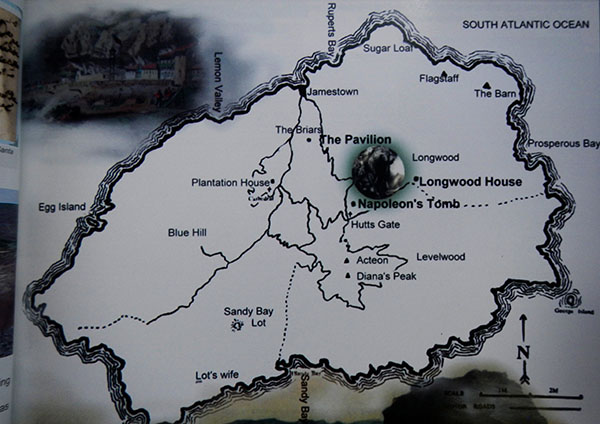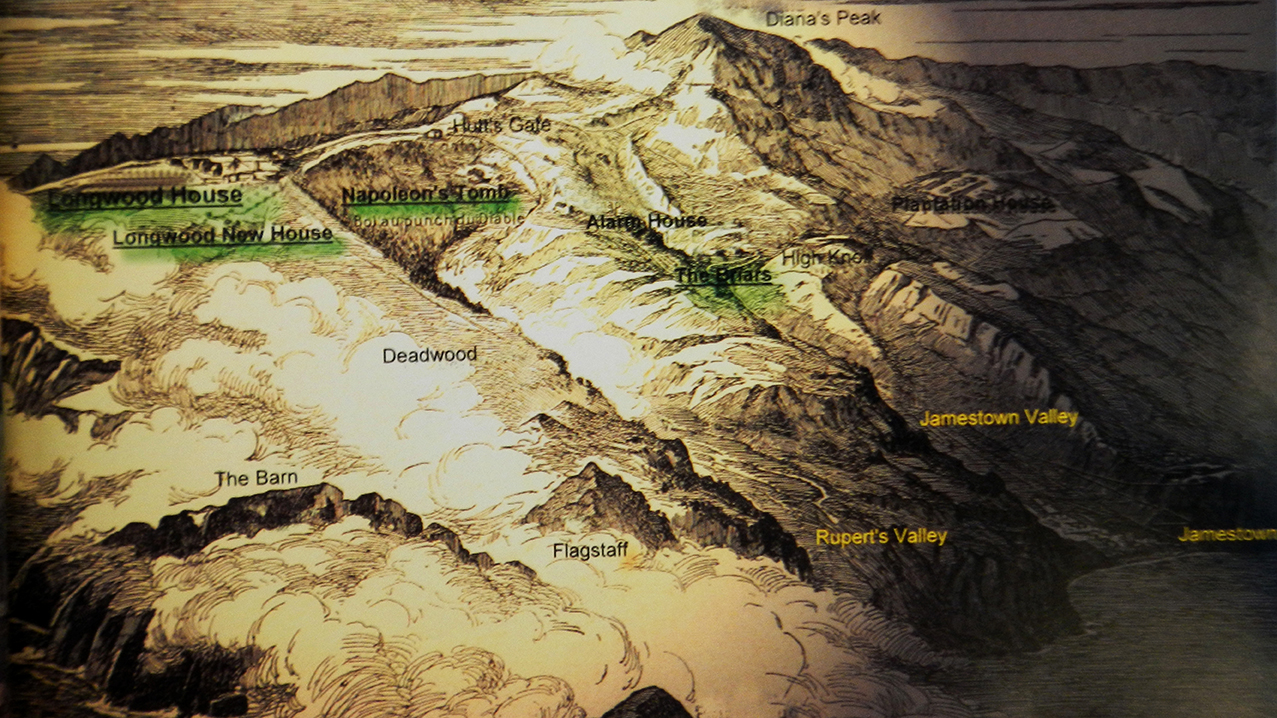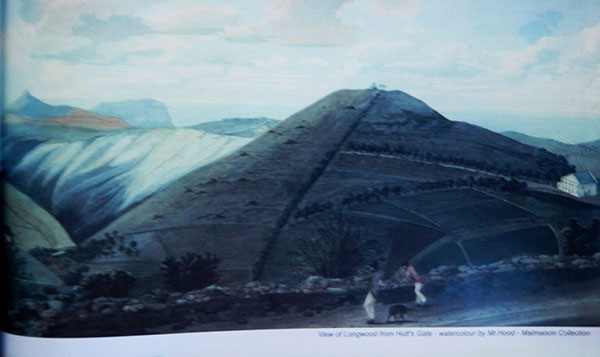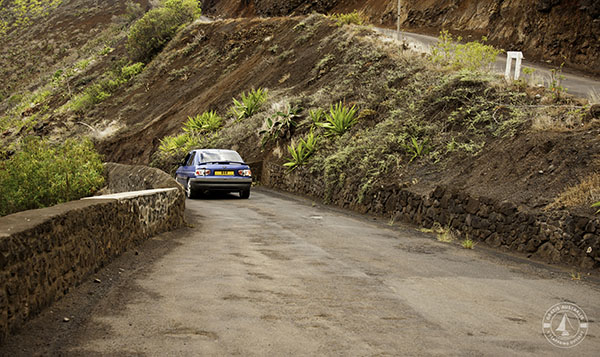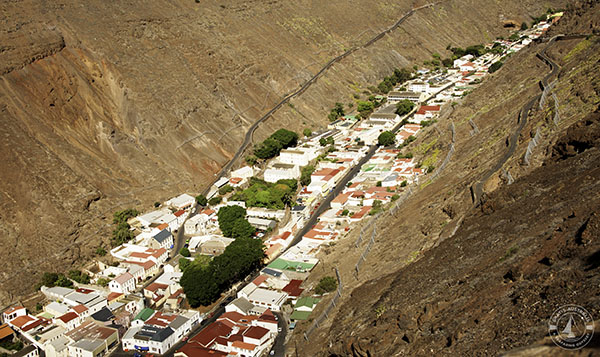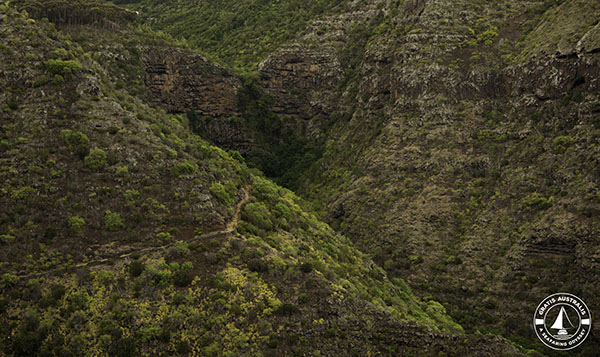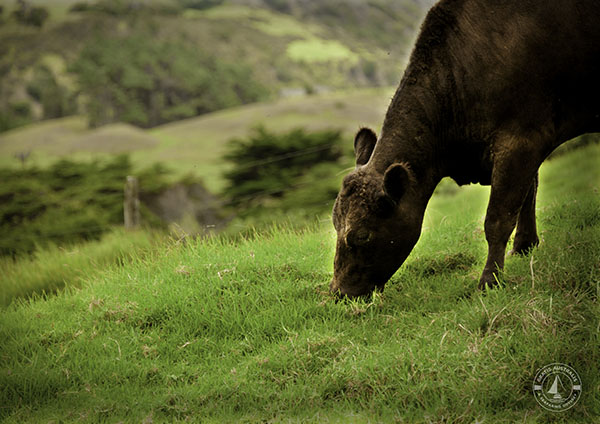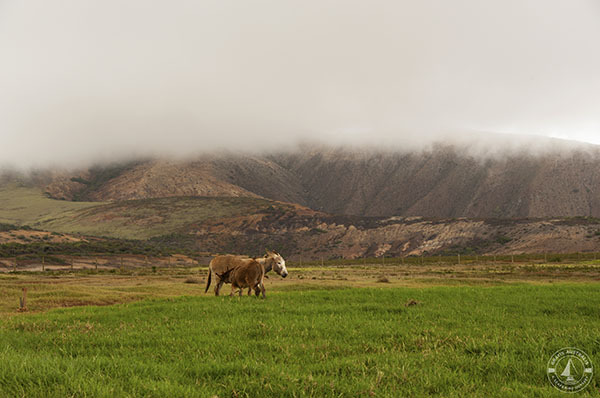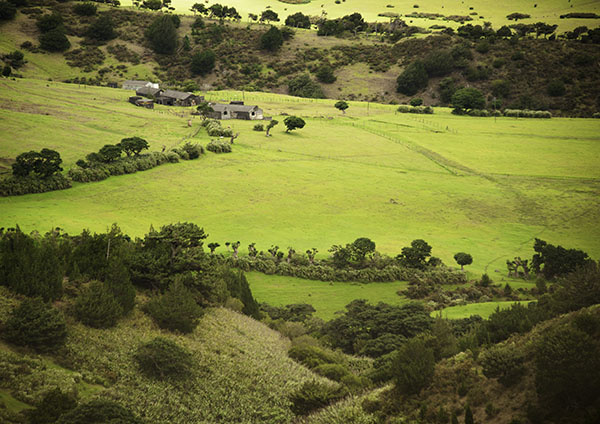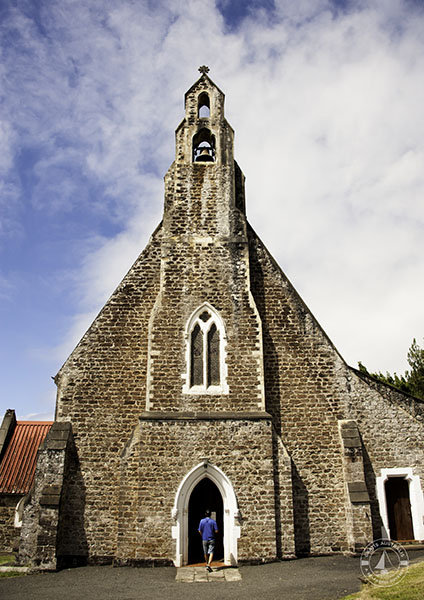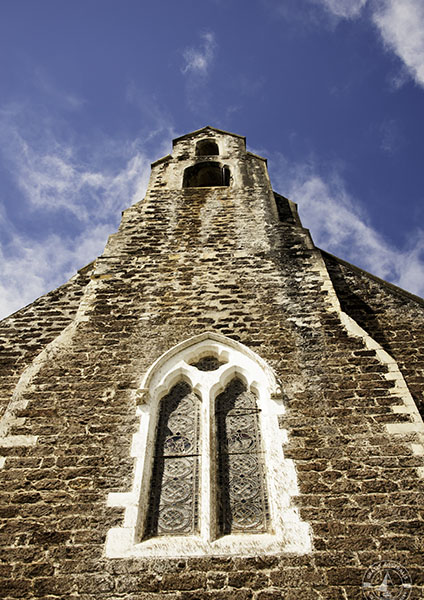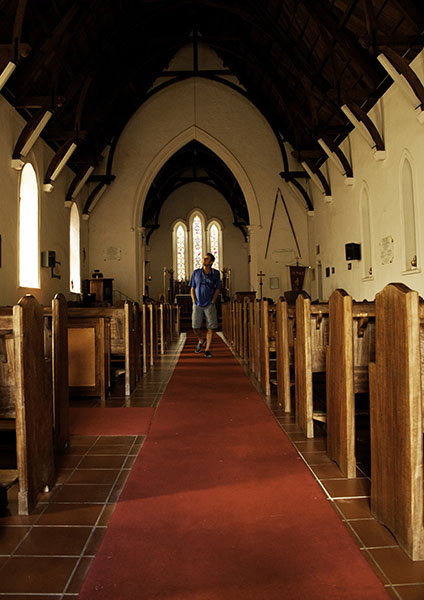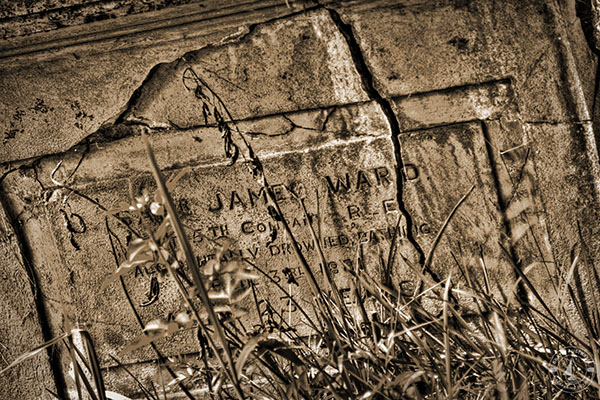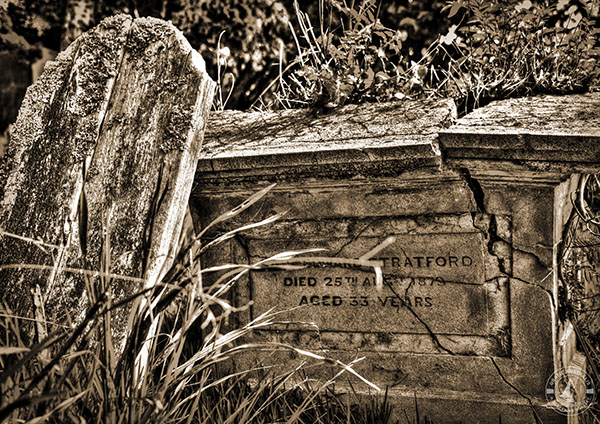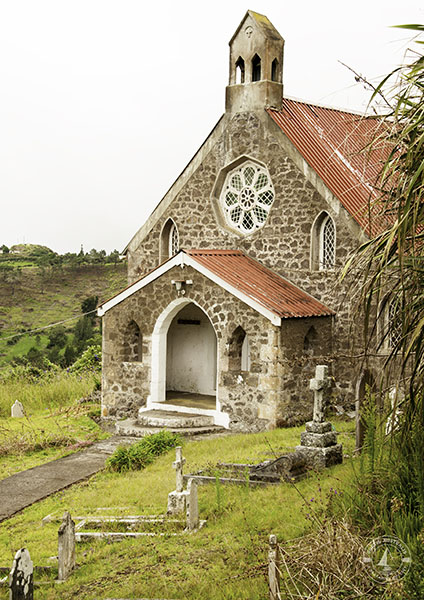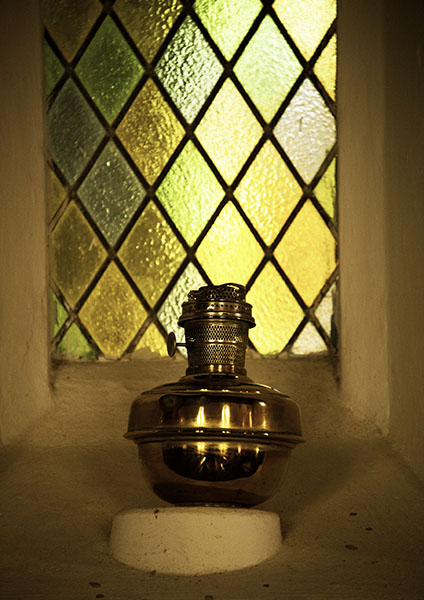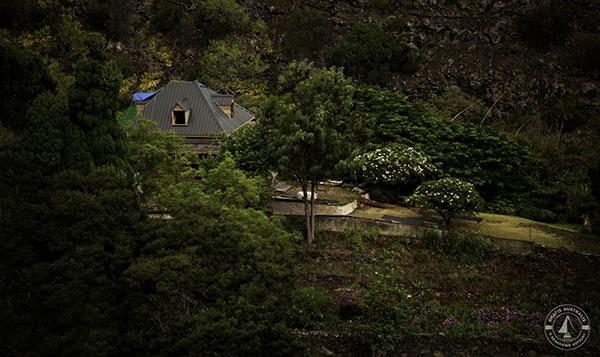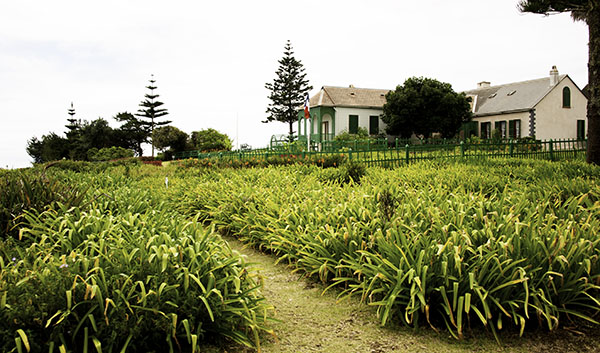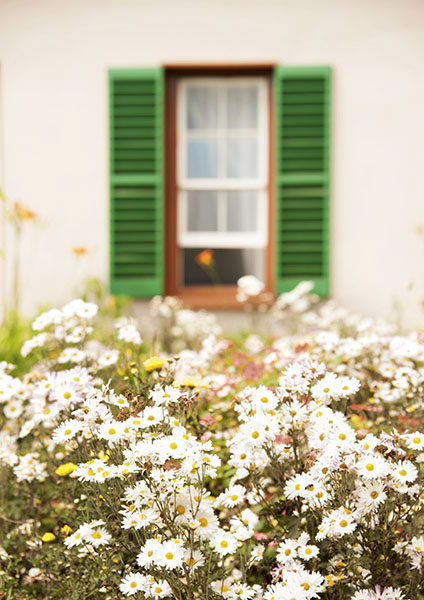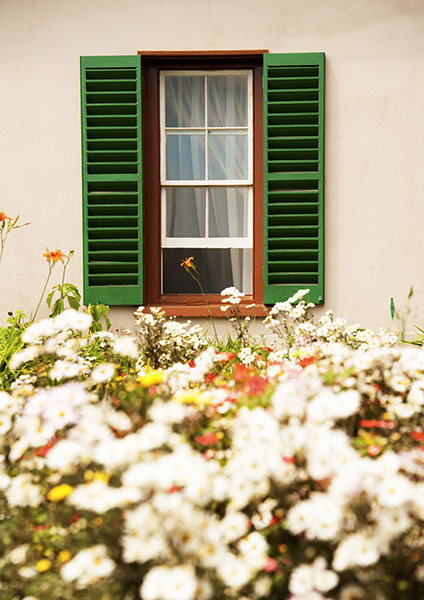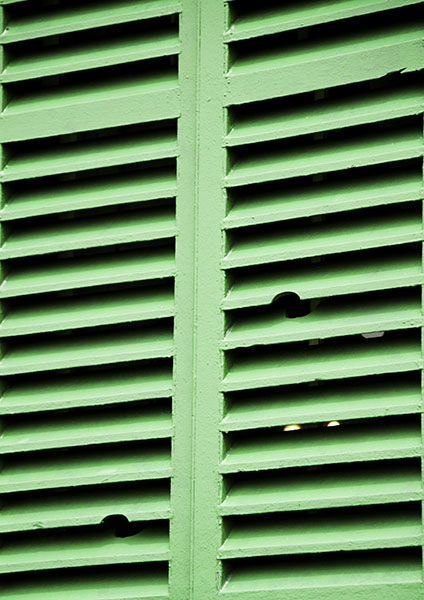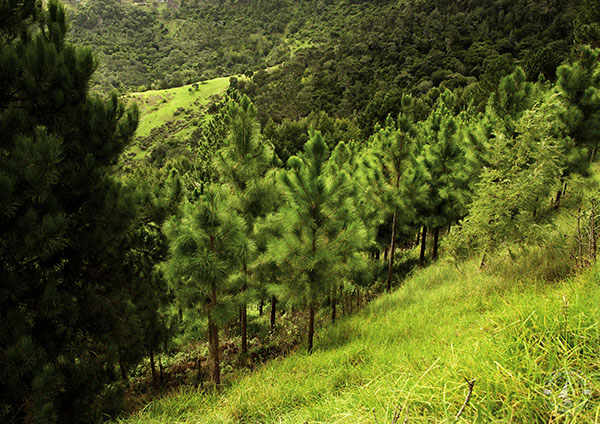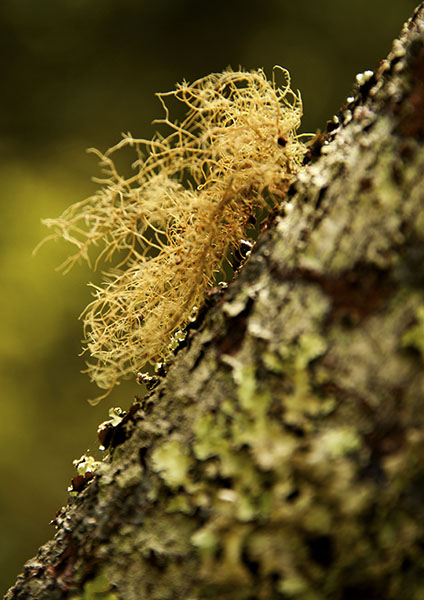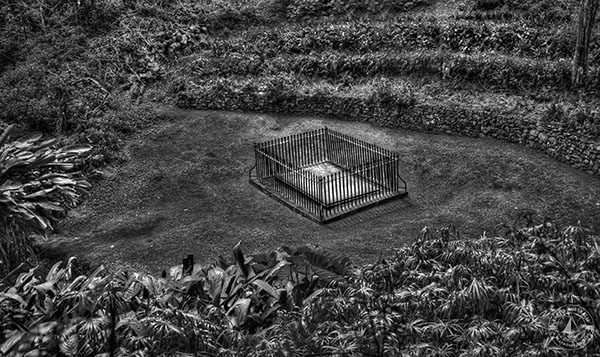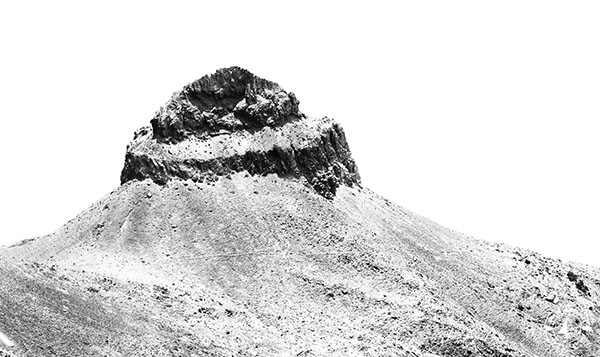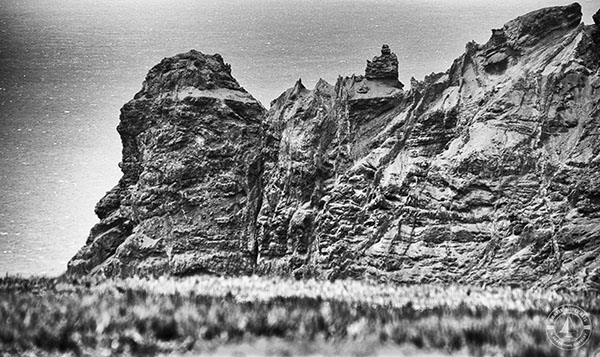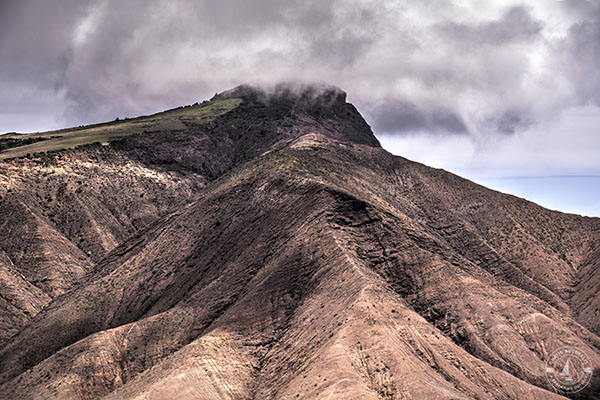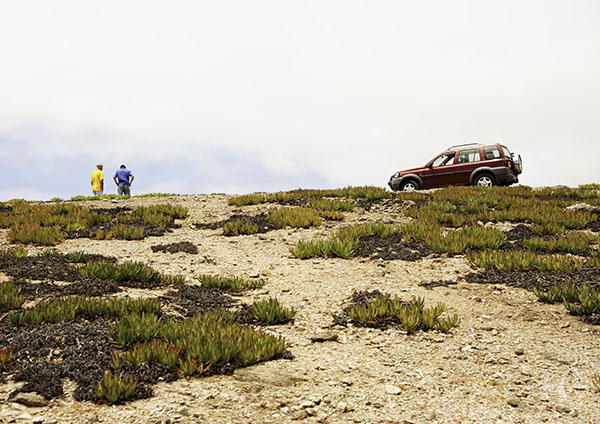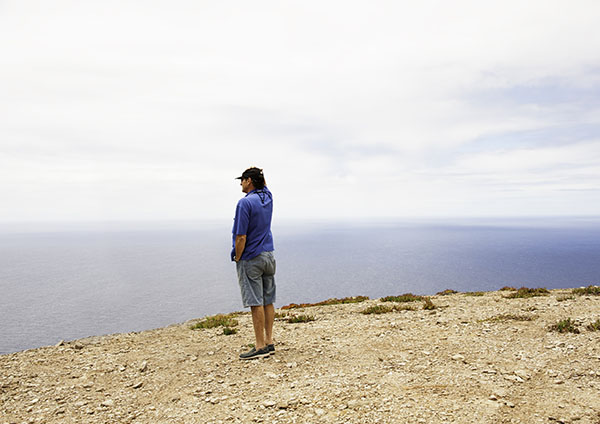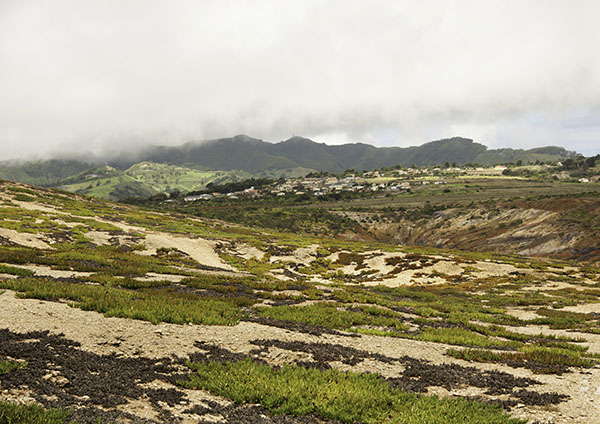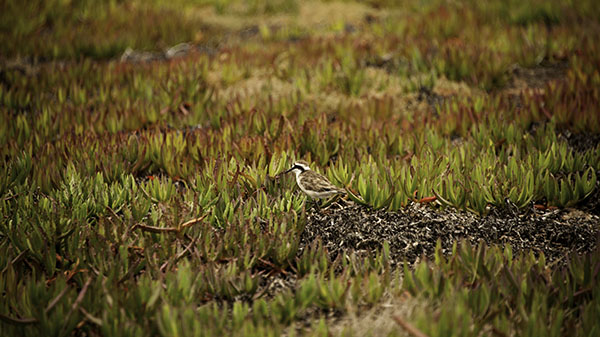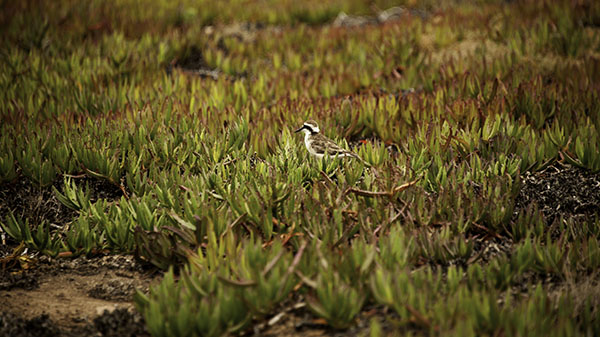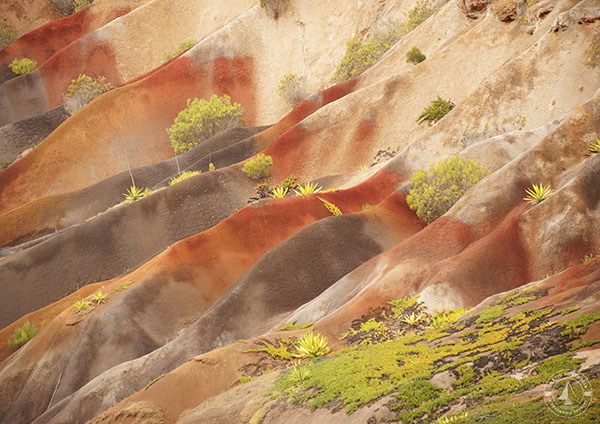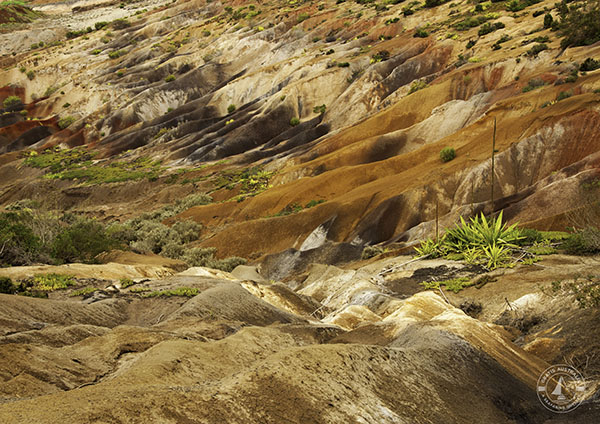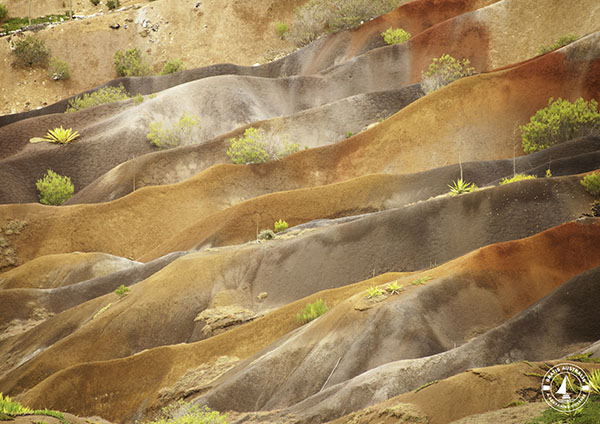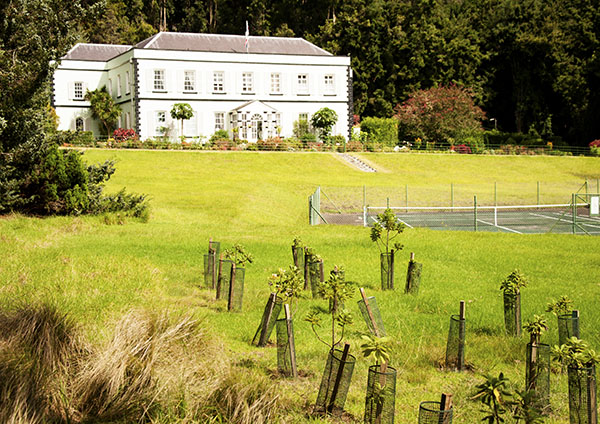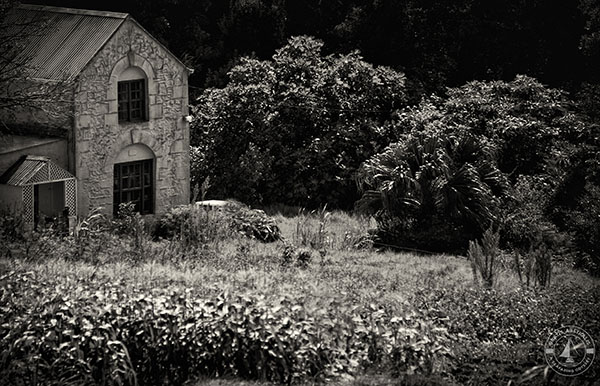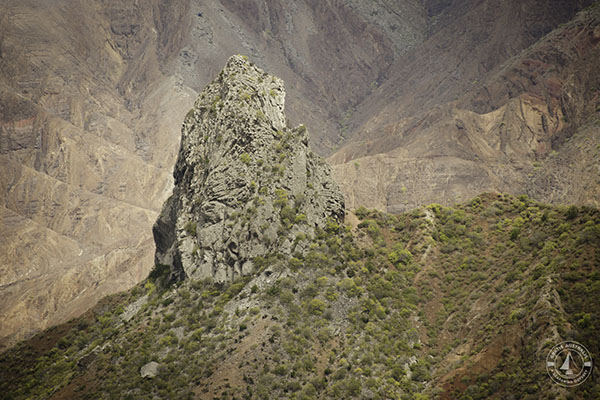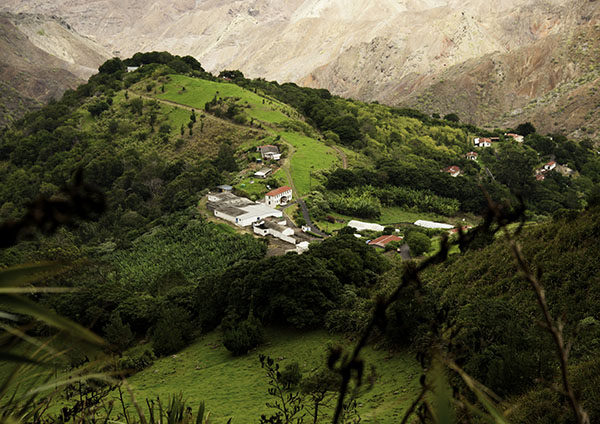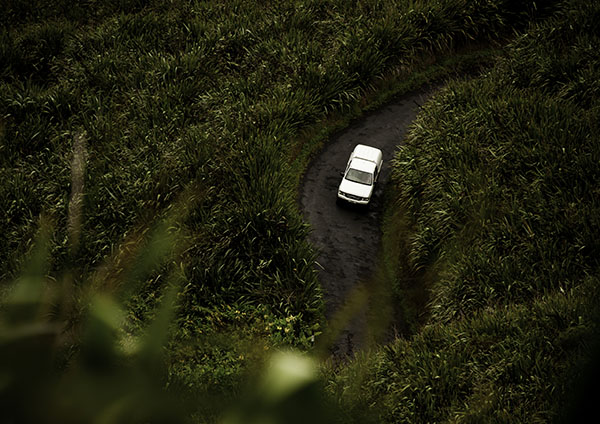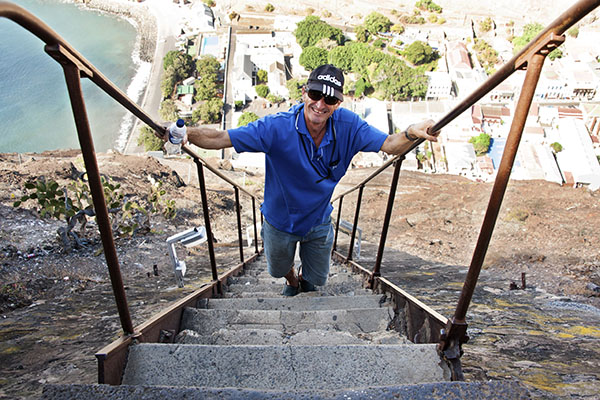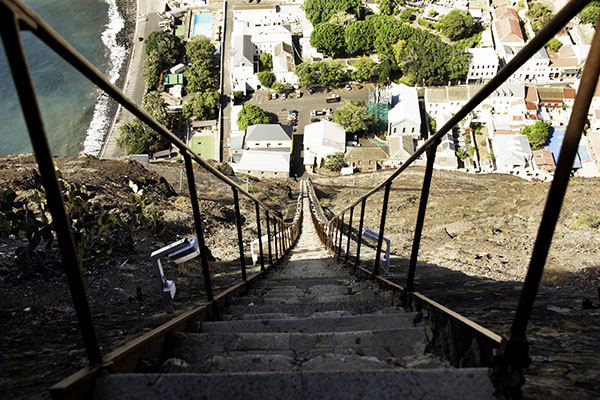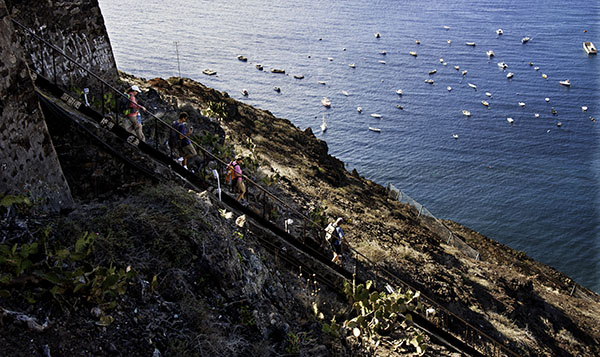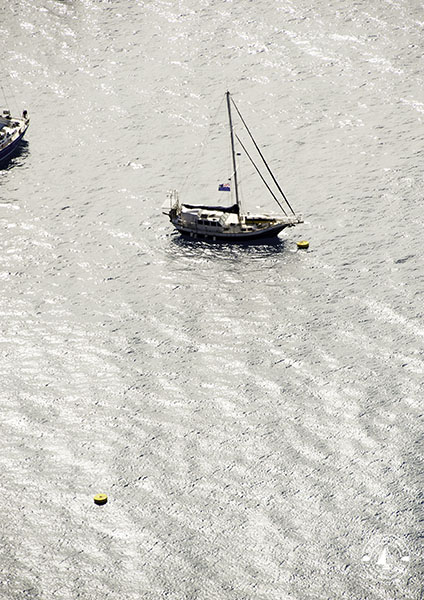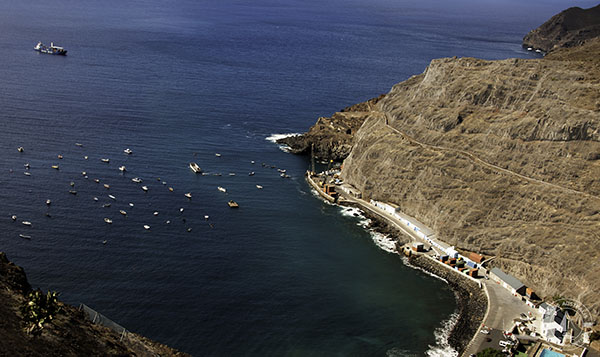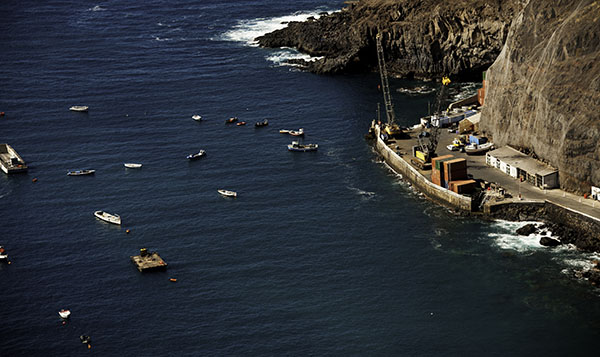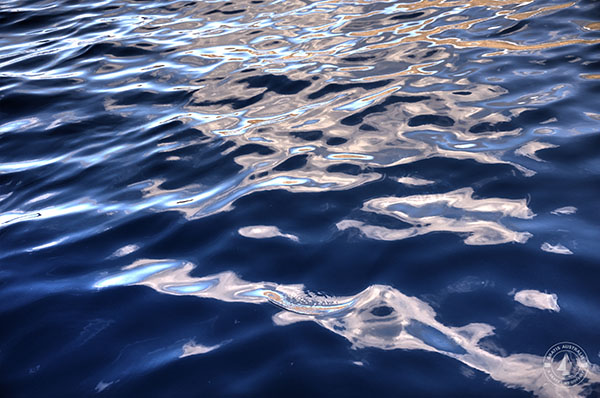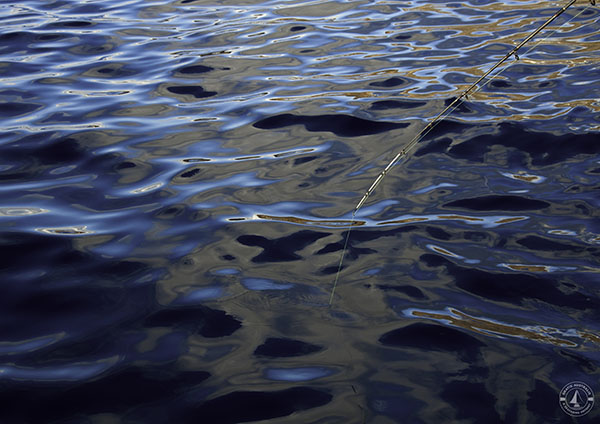As with all the small islands visited, St Helena had a mild climate controlled by the surrounding ocean and the trade winds: in this case, the combination of the South Atlantic high pressure and equatorial trough.
The best way of exploring the island was by foot, but for those of us unable to to do so, car hire (must pre – book prior to arrival on the island) and tours were available. For us, it was a most informative tour provided by Patrick Young of ‘Horizons Ltd Accommodation and Tours’.
Narrow winding roads, their steep drops aligned with hand built stone walls that protected the driver from an unexpected fall, wended their way across the island.
Here one found semi – tropical vegetation of luscious greens on the highest central ground, grassland and pasture as the altitude decreased, and dry barren terrain below five hundred metres: each with a microcosm unique to the area. A small meandering stream flowed during the wet, but now was dry as a bone.
Set against the arid desolate forbidding heights , Cows and donkeys fed upon the prized green manna from heaven in the valleys below.
Discovered by the Portuguese in 1502, it was they who introduced the destructive force of introduced flora and fauna. Despite the depredation caused by early human habitation, the island still surprisingly boasted 85 endemic flora, ten species of fish, in excess of four hundred invertebrates and one bird: hitherto, never discovered species were still regularly being discovered.
On first landing, the British discovered oranges, lemons, pomegranates, parsley, sorrel and camomile. Early on in the peace, however, the ruling powers realised the island was unable to provide sufficient foods for the population, and the shipping of products commenced – and still continues on a monthly basis today. Sadly, with the opening of the island’s airport set for early 2016, the last working Royal Mail Ship’s delivery days were numbered.
Having erupted to the heights from the sea, with no flat land to speak of, the construction of the airport was a major challenge in itself. With no natural setting for a runway, a massive 7.6 million cubic metres of soil were blasted from one of the mountain tops and transported to fill a near – by valley. From nuts and bolts, to the walls, furniture and plumbing and electricals, every item was shipped in, placed upon the barges and ferried to shore, where upon they were placed upon transport trucks and ferried to the site.
Commencing around April/May of 2016, current plans are for a one day per week Saturday flight by Comair to and from the island, departing from Johannesburg, South Africa, costing a current $1148.12AUD for a return trip (British company, Atlantic Star, will be offering charter flights). Small B&Bs are the tourist’s current accommodation means upon St Helena, but even those days are becoming numbered as the construction of a 32 room hotel is in the planning stages. For people wanting to experience exploring this island before it’s brought into the 21st century, time is running out (the same is for the island of Rodrigues in the Indian Ocean).
Transient species, such as the Humpback and Sperm Whales; Bottle – Nosed, Toothed and Nantropical dolphins; Whale Sharks; Green Turtles and Devil Rays often visited. Disappointingly, it was the wrong time of year for us to view these magnificent species.
St Paul’s Cathedral, is the burial site for the Anglicans and people of various religious denominations.
Dotted here and there were various small churches.
Napoleon
As a result of its remote location, St Helena was the perfect site for the exile of Napoleon and other significant prisoners, who included Boers, Zulu chief Dinuzulu (for leading a Zulu army against the British as a result of the appropriation and fragmentation of Zululand) and Bahraini princes.
After a voyage of 69 days, Napoleon’s first accommodation was ‘The Briers’, just out of Jamestown (undergoing major renovations at the time of our visit, we were most disappointed not to visit),
whilst Longwood (sadly, no – one was allowed to take photos within), a barn still in use at the time, underwent major renovations and extensions before being deemed an habitable abode for this most famous of prisoners.
A new house in which Napoleon and his retinue were to reside was planned and building commenced in 1819. Unfortunately, completion didn’t occur until two years past his death (apparently a magnificent house, it was sadly demolished and replaced with a government dairy), so it was in this mould and rat infested house that he remained without friends and family until his death from stomach cancer (a genetic disease from which other family members had perished) five and a half years later.
Situated upon the upper hinterland on the eastern end of the island, what had once been the lush vibrant green of endemic plant species amongst which native fauna roamed had made room for the coffee trade: the vision that greeted Napoleon, was that of a damp, bare, shade – less plain across which the trades blew their heart out, whilst cloud, rain, fog and gloom were a daily occurrence: a most depressing sight!!
Totally isolated from the world for not even newspapers were allowed, here he remained: no one knew why, but he refused to correspond with his wife and child.
Much of Napoleon’s time was passed in the billiard room, the brightest, and airiest in the house. It was in there that he would dictate letters and plan tactical battle manoeuvres. Besides his past time of gardening that commenced the creation visitors see today, riding and reading also assisted in keeping him occupied.
Using a pen – knife, the prisoner etched two peepholes into a louvered shutter, thereby enabling him to observe the sentries and other persons going about their business.
It was only upon his death, that Napoleon left the grounds for the first time since his arrival.
The Wirebird
Sighted were various transient species such as Adavats (waxbills), Noddys, Trophy Birds, Terns, Cardinals, Storm Petrels and more, but the highlight was sighting the rarest of birds – the Wirebird.
Having travelled to the cliffs overlooking the greenest of valleys below,
it was on returning to the main road that our search for this so elusive bird was rewarded on Deadwood Plain.
Well camouflaged in its coat of grey brown feathers and legs, it was only visible to the eye upon moving. Darting hither and thither in short rapid bursts with miniscule moments of remaining statue – like, one’s eye had need to remain focussed solely upon this now flighty creature in order not to lose sight.
The sole remaining endemic bird, this plover of which only four to five hundred remained, was easily disturbed and its future still hang in the balance.
Like all St Helenian species, until man and his feral companions arrived, these birds had no predators and hence, had no requirements for experiencing fear or developing evasive tactics. It was, in other words, a sitting duck. With a diet of invertebrates, these beautiful creatures resided in the dry middle altitude paddocks and semi -desert regions.
Just around the corner was the area in which multi – coloured sands were found. Rich and vibrant with many varied shades, these soils were quite spectacular.
Constructed in 1792, Plantation House was home to the island’s governor and the world’s oldest reptilian, Jonathon Tortoise.
The island’s giant remained in deep slumber, biding time until its next awakening sends a burning river of molten lava racing into the rock filled valleys below.
Six hundred feet high on an almost vertical ascent, containing 699 steps of various heights and widths, Jacob’s Ladder was an awe inspiring sight upon first view. Initially used for hauling manure up the cliff face from the valley’s floor and goods down from the heights, ascending the structure is now a challenge for the tourist.
From this vantage point, it was possible to view the anchorage and harbour far below.
Fishing, a perfect end to a perfect day.
